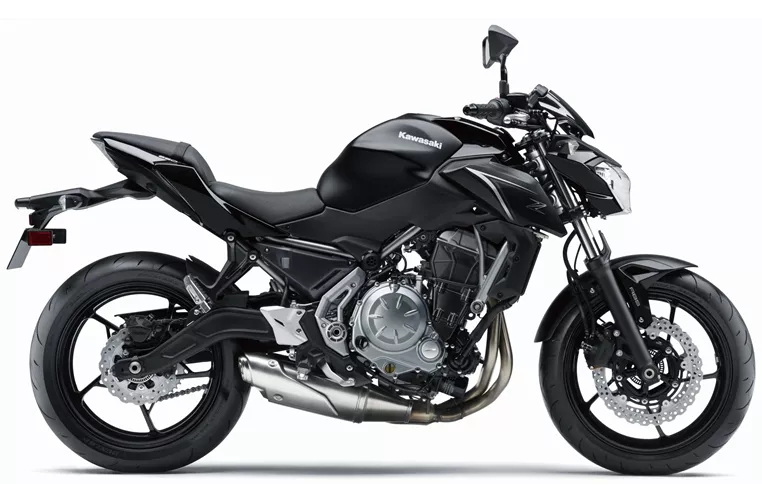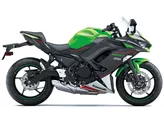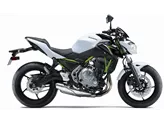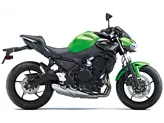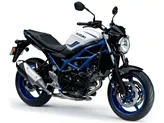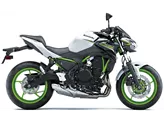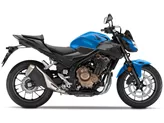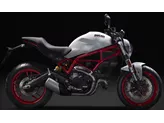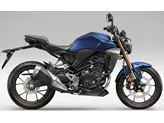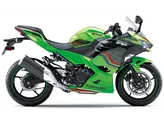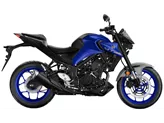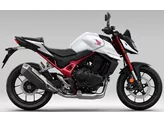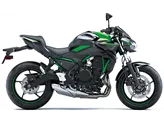Kawasaki Z650 2017 vs. Kawasaki Z 400 2019
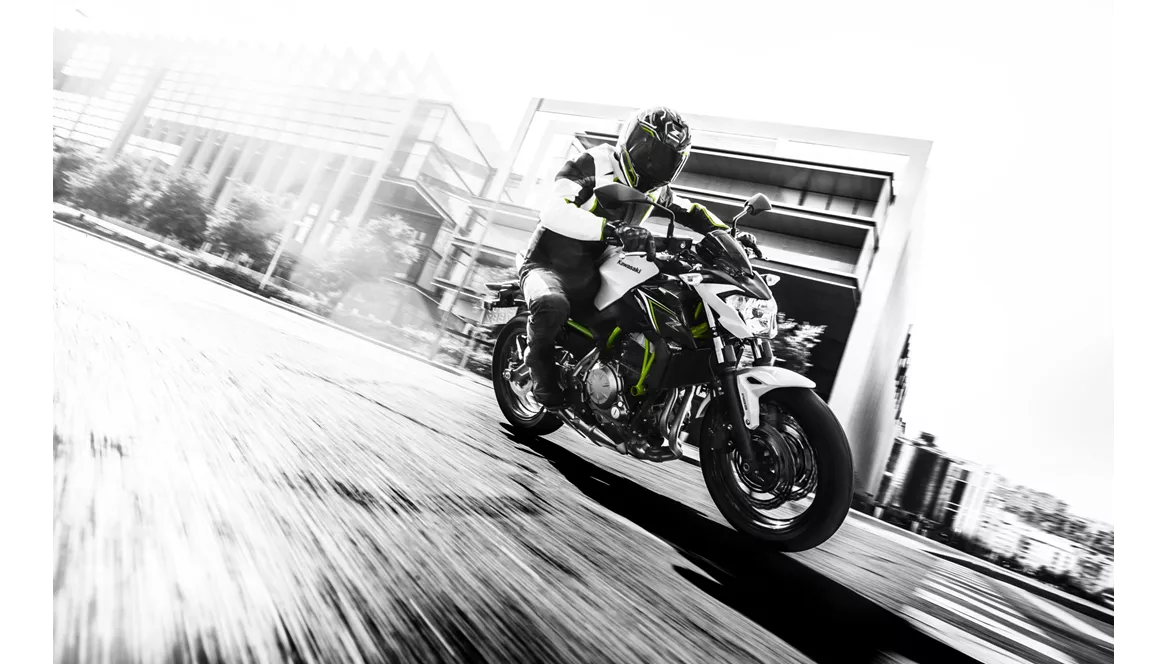
Kawasaki Z650 2017

Kawasaki Z 400 2019
Visão geral - Kawasaki Z650 2017 vs Kawasaki Z 400 2019
The Kawasaki Z650 2017 and the Kawasaki Z 400 2019 are both naked bikes from Kawasaki, but they have some key differences in terms of specifications and strengths.
Starting with the Kawasaki Z650 2017, it is equipped with an inline 2-cylinder engine that produces 68.2 HP of power and 65.7 Nm of torque. The fuel system is injection-based, and the cooling system is liquid-cooled. The displacement of the engine is 649cc. The front suspension consists of telescopic forks, while the rear suspension features a swingarm with a monoshock and pre-load adjustment. The frame is made of steel, and the front brakes are dual disc with a diameter of 300mm. The bike also comes with ABS as an advanced assistance system. The front tire has a width of 120mm and a diameter of 17 inches, while the rear tire has a width of 160mm and a diameter of 17 inches. The wheelbase is 1410mm, and the seat height is 790mm. The bike weighs 187.1 kg (with ABS) and has a fuel tank capacity of 15 liters.

Kawasaki Z650 2017
On the other hand, the Kawasaki Z 400 2019 is equipped with an inline 2-cylinder engine that produces 45 HP of power and 38 Nm of torque. The fuel system is also injection-based, and the cooling system is liquid-cooled. The displacement of the engine is 399cc, making it smaller than the Z650. The front suspension consists of telescopic forks, and the rear suspension features a swingarm with a monoshock and pre-load adjustment. The frame is made of steel, similar to the Z650. However, the front brakes are single disc with a larger diameter of 310mm. Like the Z650, the Z 400 also comes with ABS as an advanced assistance system. The front tire has a width of 110mm and a diameter of 17 inches, while the rear tire has a width of 150mm and a diameter of 17 inches. The wheelbase is slightly shorter at 1370mm, and the seat height is 785mm. The bike weighs 167 kg (with ABS) and has a fuel tank capacity of 14 liters, which is slightly smaller than the Z650.
In terms of strengths, the Kawasaki Z650 2017 offers a smooth power delivery, a sporty chassis, compact dimensions, and a negative display. These features make it a versatile and enjoyable bike to ride. On the other hand, the Kawasaki Z 400 2019 has excellent and very controllable power, a reduced weight, a good seating position, excellent sound, and is particularly suitable for beginner riders. These strengths make it a great option for those who are new to motorcycling and want a bike that is easy to handle.
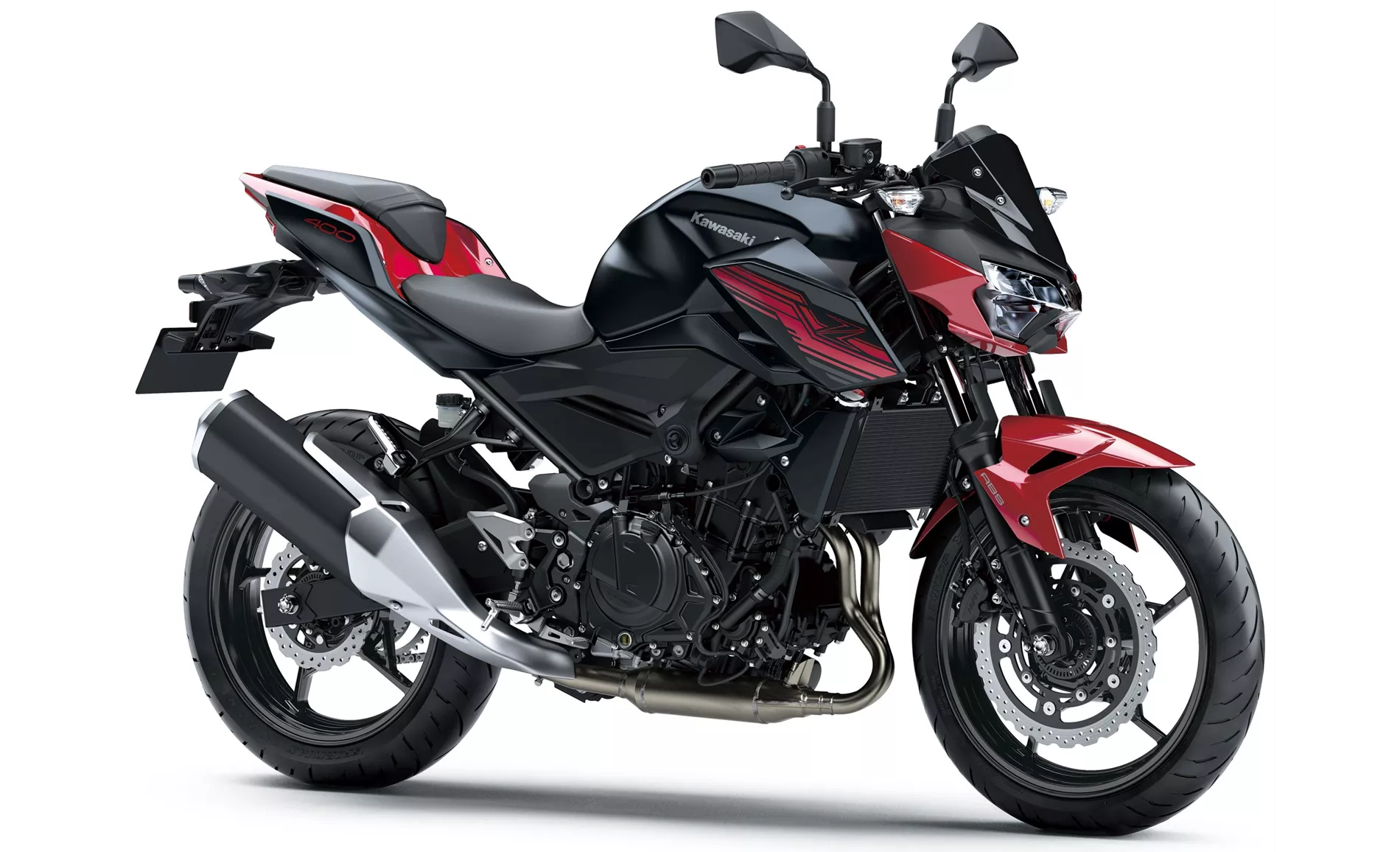
Kawasaki Z 400 2019
However, both bikes have their weaknesses. The Kawasaki Z650 2017 may be a bit small for taller riders, which could affect their comfort on longer rides. On the other hand, the Kawasaki Z 400 2019 has non-adjustable clutch and brake levers, which may not suit all riders' preferences. Additionally, the chassis of the Z 400 has limited adjustability, which may limit customization options for some riders.
In conclusion, the Kawasaki Z650 2017 and the Kawasaki Z 400 2019 are both solid options in the naked bike category. The Z650 offers more power and a larger engine displacement, while the Z 400 is more lightweight and suitable for beginner riders. Ultimately, the choice between the two will depend on the rider's preferences and riding experience.
Especificações técnicas Kawasaki Z650 2017 em comparação com Kawasaki Z 400 2019
Prós e contras em comparação
Prós e contras em comparação
Kawasaki Z650 2017
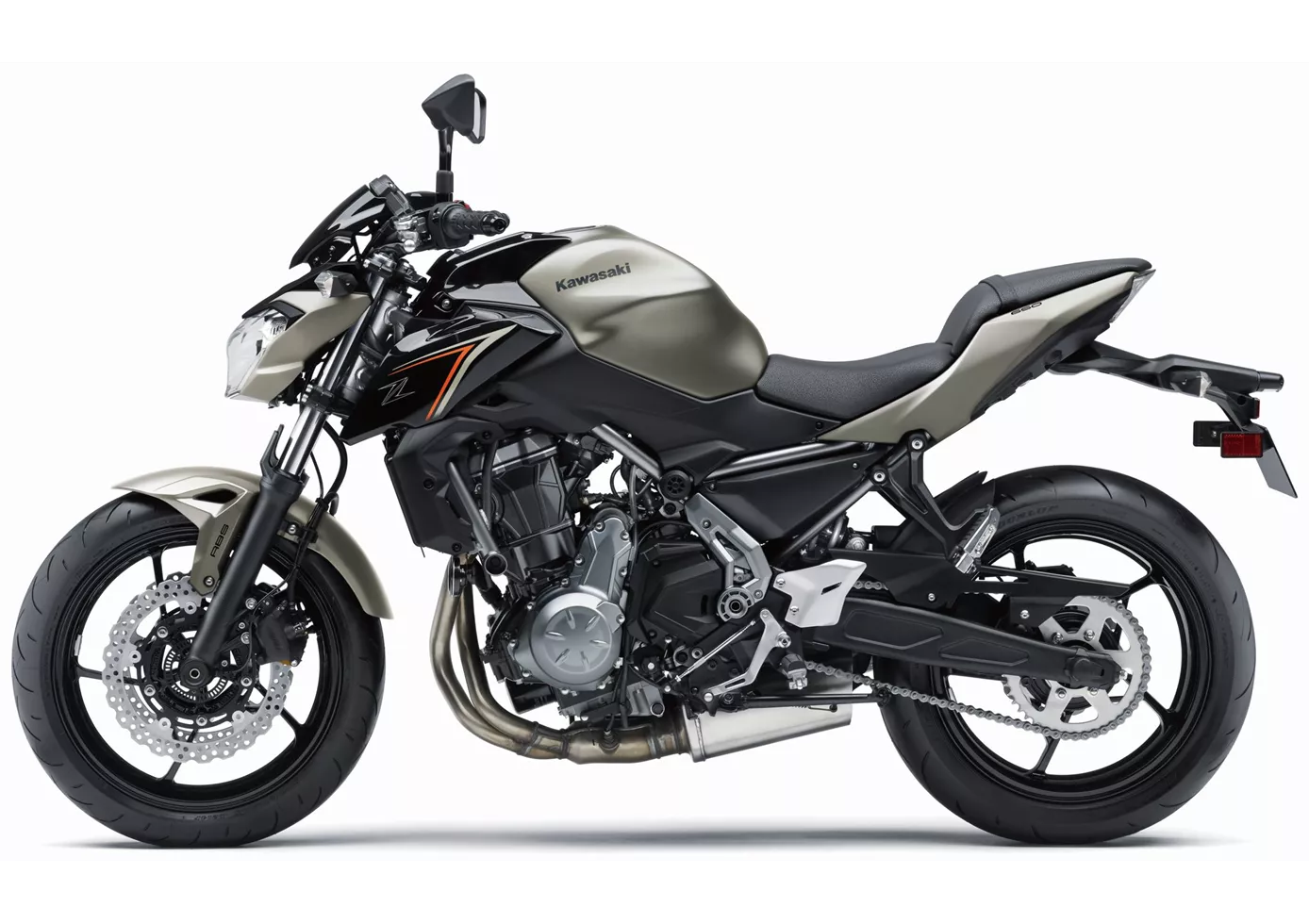
A Kawasaki Z 650 é a ponta da classe média para os pequenos condutores masculinos e femininos. Com as suas dimensões compactas, provavelmente não se sentirá confortável como um gigante. No entanto, as sensações reconfortantes vêm do motor, que se delicia com uma tração muito suave. Do lado do chassis, foi escolhida uma configuração apertada típica da Kawasaki, que encontra um ótimo compromisso na utilização diária. O ecrã negativo é muito fácil de ler e faz lembrar a sua antecessora, a ER-6n - muito bonito!
Kawasaki Z 400 2019

A Kawasaki Z400 é definitivamente uma grande evolução da sua antecessora, a Z300. Mais potência, menos peso - em suma, simplesmente uma moto ainda melhor. Acima de tudo, a entrega de potência linear e o excelente manuseamento fazem da Z400 uma moto de entrada de gama ideal. A facilidade de operação da embraiagem e a boa configuração do quadro também estão nesta linha, razão pela qual a Z400 pode ser recomendada sem hesitação a pilotos principiantes.
Comparação de preços Preço médio de mercado Kawasaki Z650 vs Kawasaki Z 400
There are a few key differences between a Kawasaki Z650 2017 and a Kawasaki Z 400 2019. In terms of price, the actual average price of a Kawasaki Z650 2017 is about 25% higher. A Kawasaki Z650 2017 experiences a loss of 420 EUR in one year of ownership. This is offset by a loss of 330 EUR for a Kawasaki Z 400 2019. Compared to Kawasaki Z 400 2019 there are more Kawasaki Z650 2017 bikes available on the 1000PS.de Marketplace, specifically 11 compared to 6. It takes less time to sell a Kawasaki Z650 with 76 days compared to 99 days for a Kawasaki Z 400. Since model year 2017 1000PS.de editors have written 31 reviews for the Kawasaki Z650 and 8 reviews for the Kawasaki Z 400 since model year 2019. The first review for the Kawasaki Z650 was published on 08/11/2016 and now has more than 25 000 views. This compares to more than 23 200 views for the first review on Kawasaki Z 400 published on 02/10/2018.
